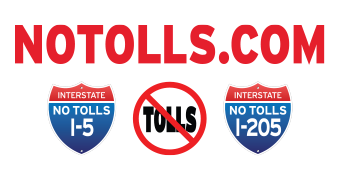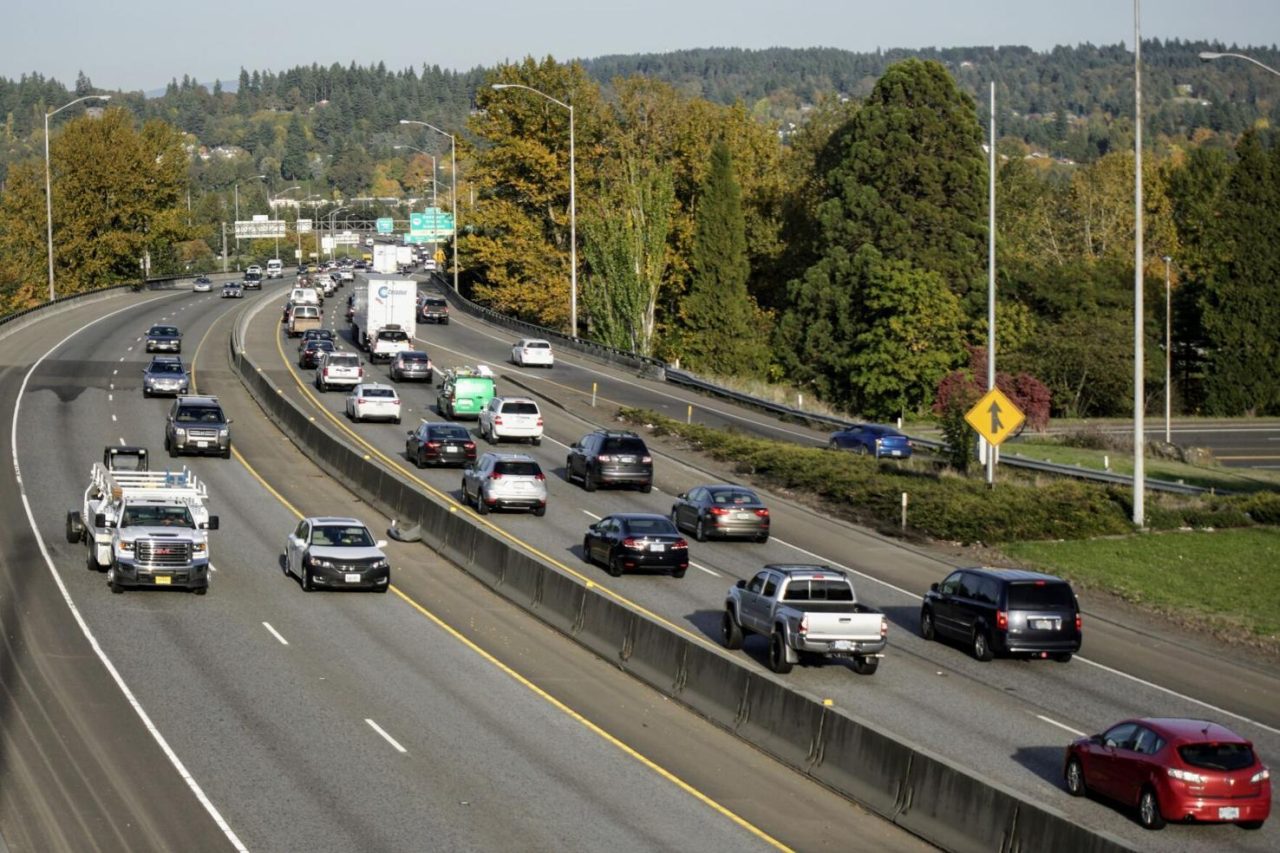Opinion: Is ODOT about to swerve out of its lane with its I-205 Toll Project?
By
March 12, 2023 (Canby Herald)
The Oregon Department of Transportation is moving fast in advancing what it’s calling the I-205 Toll Project. Its project name suggests the purpose of the project is to toll. ODOT’s project website has a lot of information on how tolls will supposedly reduce traffic congestion and be beneficial to you and the economy.
ODOT’s actual project will replace bridges and add two lanes to an existing 7-mile stretch of a four-lane freeway between Stafford Road and Highway 213.
ODOT seeks to use toll collections to pay for project. The added freeway lanes, not tolls, will account for most of congestion relief because they add 50% to the traffic capacity of the existing four-lane freeway.
The $800 million project will install electronic tolling equipment at the Tualatin River and Abernethy Bridges. As your vehicle crosses these bridges, you will be charged a toll. Tolls will be in effect 24 hours a day, seven days a week. Toll charges will vary depending on the time of day.
An evaluation of the project, called an Environmental Assessment, explains that tolls during rush hours will reduce congestion and initially cost $2.20 per bridge crossing. Peak hour tolls could be as high a $4. Tolls after rush hour will range from 65 cents to $1.
The project assessment says the average annual cost of tolls per vehicle will be $600, and tolls could be in place by 2024 before the project is finished.
Tolls may actually cost your business or household annual budget far more than $600. Commuters will likely pay more than $2,000 annually. An estimate of your cost can be made by estimating the number of trips you take each day across the two tolled bridges, using the toll at each bridge of $2.20.
Residents in cities and other areas near the freeway could pay upwards of $1,500 annually to make trips to and from schools, driving to work, going to appointments and visiting friends.
Charging tolls at the Tualatin River and Abernethy Bridges is one way to pay for added lanes and new bridges. Another way is to continue to use existing funding sources like gas taxes, weight-mile taxes and federal funds. A 4 cent gas tax increase should be enough to fund the project. Using federal funds could reduce this amount. The cost to you is about $30 a year, less than your weekly toll cost.
Did ODOT make a mistake by only considering tolls in their project assessment? Adding two new I-205 freeway lanes will reduce congestion by increasing traffic capacity, improving traffic flow and safety for many years to come. In the years ahead, ODOT could look at tolling again. Now is not the right time, and I-205 is not the right place for tolls.
Can ODOT avoid what may be a public-relations blunder by looking at replacing tolls with another funding source? The project assessment makes tolls sound virtuous.
The ODOT assessment says tolls are beneficial to the economy and cause only minor adverse impacts. ODOT also states negative impacts can be mitigated. How does ODOT “mitigate” the cost of tolls on household and business budgets? How does unwanted traffic in your neighborhood from vehicles bypassing tolls improve safety?
While some elected officials in or near the project area have expressed concerns about tolls and project impacts, others have not. At the risk of offending officials who may have weighed in, but not publicly, isn’t it time to know whether they have concerns? Do your elected representatives support tolls?
In the absence of opposition to tolls, it is likely the I-205 Toll Project will get the green light in the next few months; however, there is a bill before the legislature that could sideline tolls on I-205 as well as I-5.
Senate Bill 933 is now under consideration in Oregon Senate. If it enacted, it: “Prohibits the Oregon Transportation Commission from establishing tolls on Interstate 205 or Interstate 5. Provides exception for tolls on Interstate 5 bridges that cross Columbia River. Directs Department of Transportation to conduct analysis of alternative funding sources for specified bridge projects. Sunsets report Jan. 2, 2024. Declares emergency, effective on passage.”
If you support this bill, you may want to consider contacting your elected officials now. Let’s get ODOT back in its lane!
Cam Gilmour is retired from serving as ODOT’s deputy director of finance and administration, Clackamas County’s director of transportation and development and the state of Washington’s transportation department’s chief operating officer.


